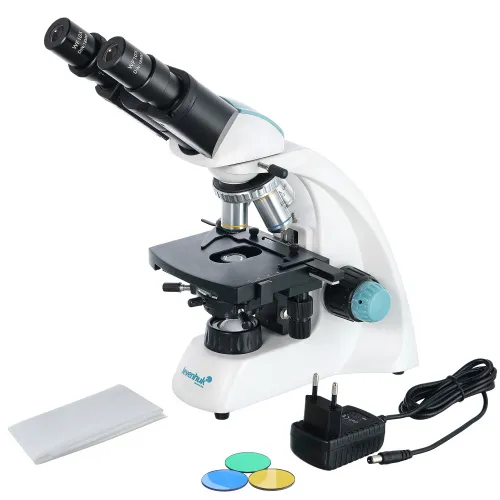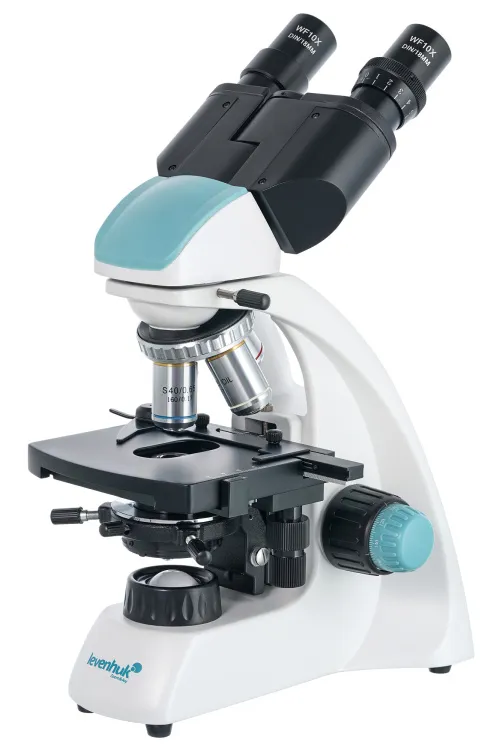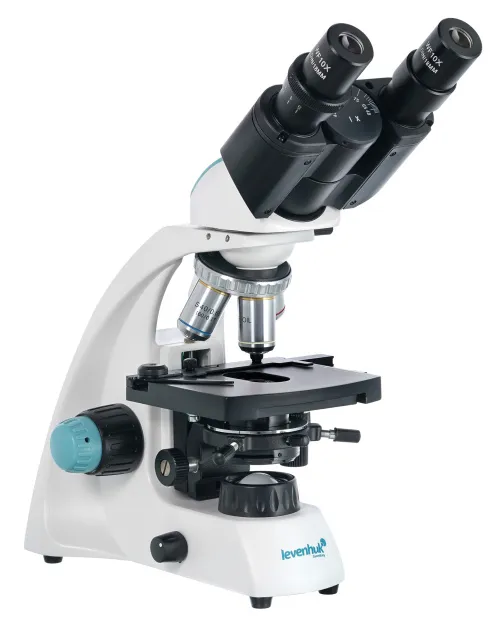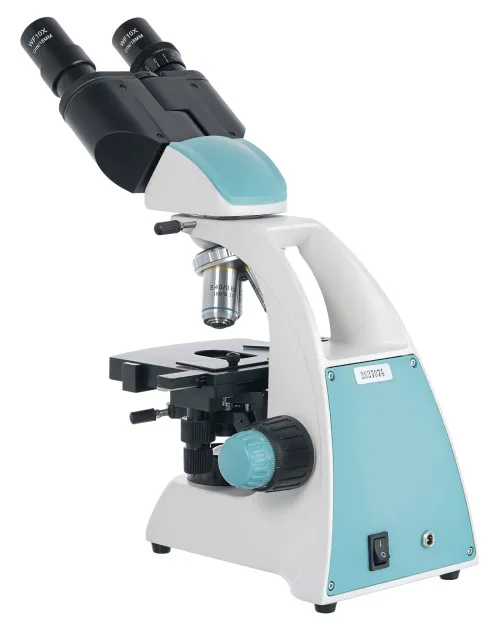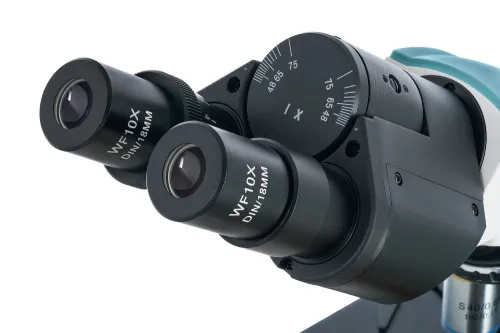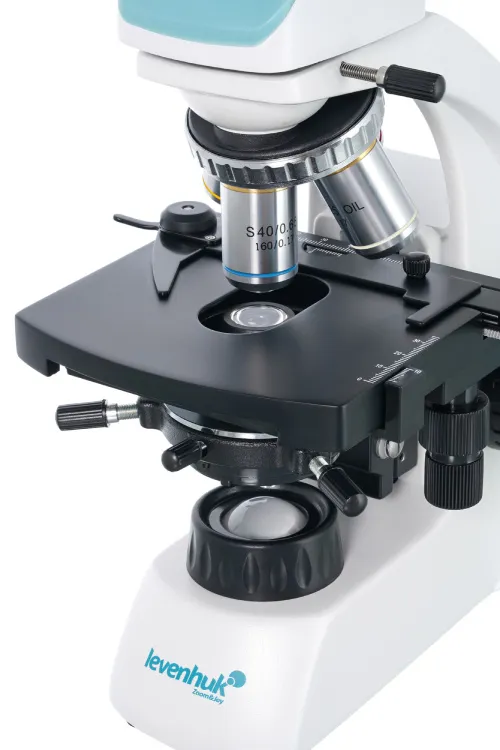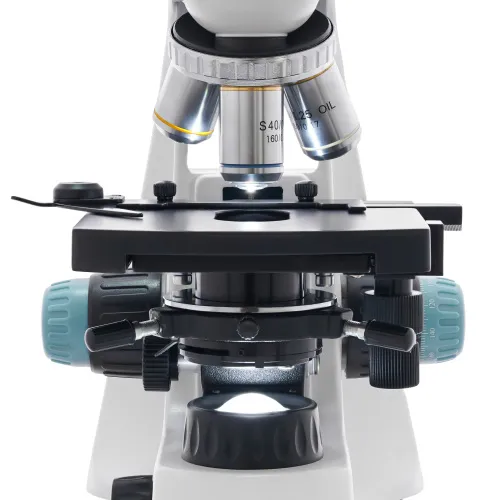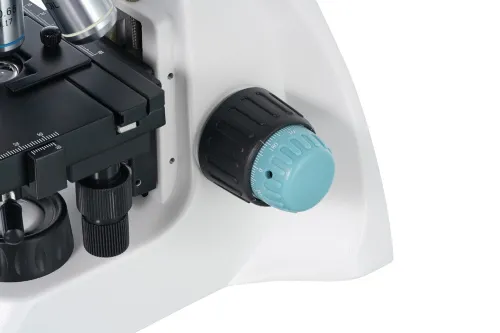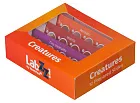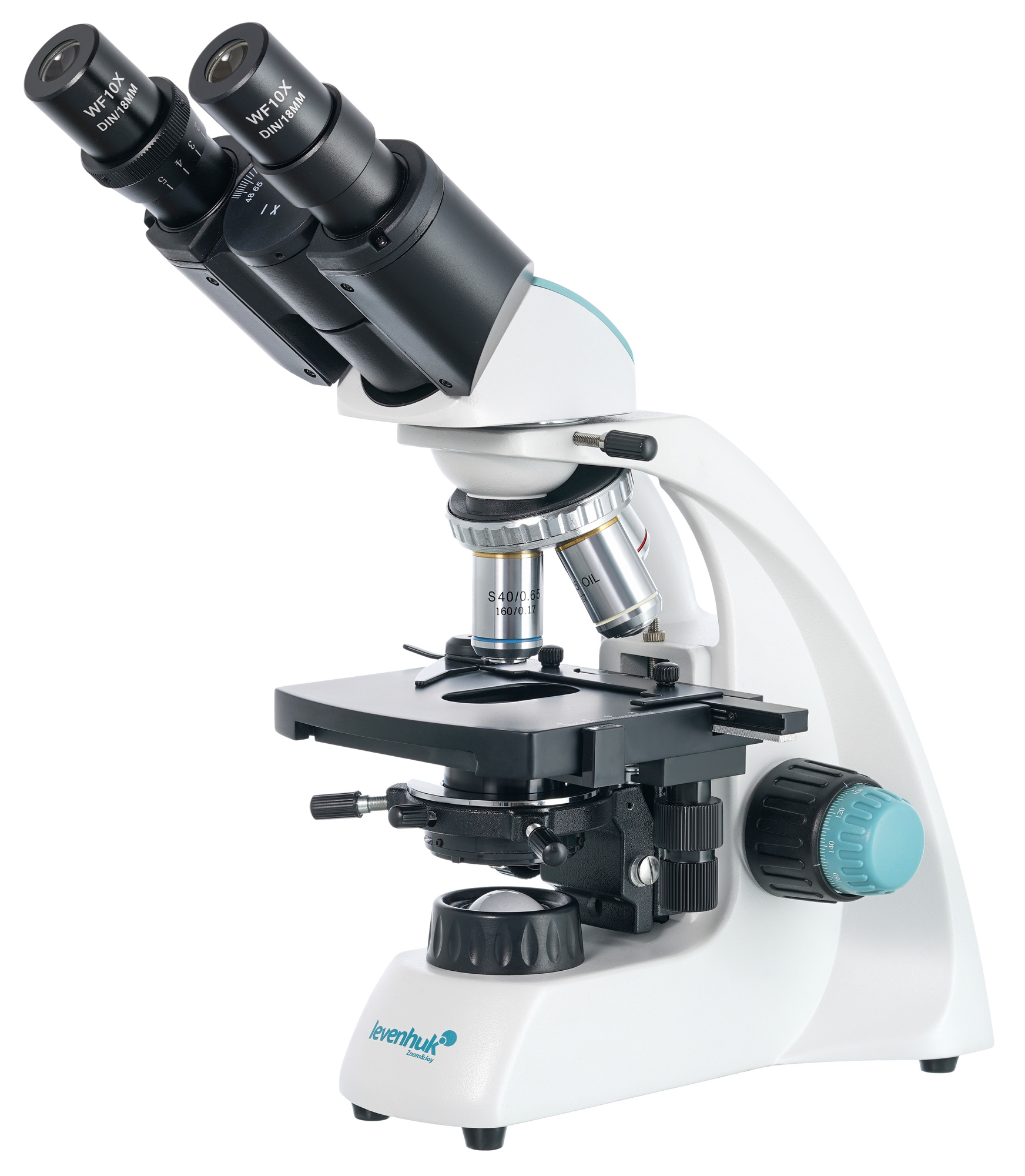Levenhuk 400B Binocular Microscope
Magnification: 40–1000x. Binocular head, achromatic objectives, LED light with a collector
| Product ID | 75420 |
| Brand | Levenhuk, Inc., USA |
| Warranty | lifetime |
| EAN | 5905555005256 |
| Package size (LxWxH) | 40x19x27 cm |
| Shipping Weight | 3.86 kg |
Levenhuk 400B is a binocular laboratory microscope for professional work for a microbiologist, medical worker, veterinarian, ornithologist, ecologist, or biochemist. This universal model can be used for bright field research as well as for research using oil immersion. This microscope features a reliable metal body, high-quality achromatic optics and bright LED light with a collector.
A binocular head is optimal for lengthy work with a microscope as it reduces eyestrain. It can be rotated 360° around its axis; a visual part is inclined at 30°. Wide-field eyepieces provide 10x magnification; achromatic objectives come pre-installed in a revolving nosepiece: they provide 4x, 10x, 40x, and 100x magnification. Total microscope magnification varies in the range from 40x to 1000x. The 40xs and 100xs objectives are equipped with protective spring-loaded frames of the front lens. A 100xs objective can be used for oil immersion.
The stage is equipped with a mechanical scale; under the stage there is an Abbe condenser with an iris diaphragm and a filter holder. Below, there is a lighting unit: an LED light with a collector. The light brightness is adjustable. As it is possible to use batteries to power the microscope, it is easy to use the device when you are away from a power outlet.
Features:
- Binocular laboratory microscope, rotatable angled head
- Observations in the bright field in incident light, oil immersion
- Achromatic wide-field optics, magnification from 40x to 1000x
- LED light with a collector and brightness adjustment
- Metal body, standard eyepiece barrel diameter
- Power supply is variable: by batteries or AC power supply
The kit includes:
- Microscope
- 4x, 10x, 40xs, 100xs (oil) achromatic objectives
- WF10x/18mm eyepieces (2 pcs)
- Abbe condenser N.A. 1.25 with an iris diaphragm and a filter holder
- Charging power cord
- Bottle of immersion oil
- Filters: blue, green, yellow
- Dust cover
- User manual and lifetime warranty
| Product ID | 75420 |
| Brand | Levenhuk, Inc., USA |
| Warranty | lifetime |
| EAN | 5905555005256 |
| Package size (LxWxH) | 40x19x27 cm |
| Shipping Weight | 3.86 kg |
| Type | biological, light/optical |
| Microscope head type | binocular |
| Optics material | optical glass |
| Head | 360 ° rotatable |
| Head inclination angle | 30 ° |
| Magnification, x | 40 — 1000 |
| Eyepiece tube diameter, mm | 23.2 |
| Eyepieces | WF10x/18mm (2 pcs.) |
| Objectives | achromatic: 4x, 10x, 40xs, 100xs (oil immersion) |
| Revolving nosepiece | for 4 objectives |
| Interpupillary distance, mm | 48 — 75 |
| Stage, mm | 115x110 |
| Stage moving range, mm | 55/20 |
| Stage features | mechanical double-layer |
| Eyepiece diopter adjustment, diopters | ±5 |
| Condenser | Abbe N.A. 1.25 with an iris diaphragm and filter holder |
| Diaphragm | iris |
| Focus | coaxial, coarse (12mm) and fine (0.002mm) |
| Body | metal |
| Illumination | LED |
| Brightness adjustment | ✓ |
| Power supply | 110–220V, via AC adapter (included), 3 AA batteries (not included) |
| Power supply: batteries/built-in battery | yes |
| Light source type | with a collector, 1W LED |
| Light filters | blue, green, yellow |
| User level | experienced users |
| Assembly and installation difficulty level | easy |
| Application | laboratory/medical |
| Illumination location | lower |
| Research method | bright field |
| Pouch/case/bag in set | dust cover |
We have gathered answers to the most frequently asked questions to help you sort things out
Find out why studying eyes under a microscope is entertaining; how insects’ and arachnids’ eyes differ and what the best way is to observe such an interesting specimen
Read this review to learn how to observe human hair, what different hair looks like under a microscope and what magnification is required for observations
Learn what a numerical aperture is and how to choose a suitable objective lens for your microscope here
Learn what a spider looks like under microscope, when the best time is to take photos of it, how to study it properly at magnification and more interesting facts about observing insects and arachnids
This review for beginner explorers of the micro world introduces you to the optical, illuminating and mechanical parts of a microscope and their functions
Short article about Paramecium caudatum - a microorganism that is interesting to observe through any microscope


